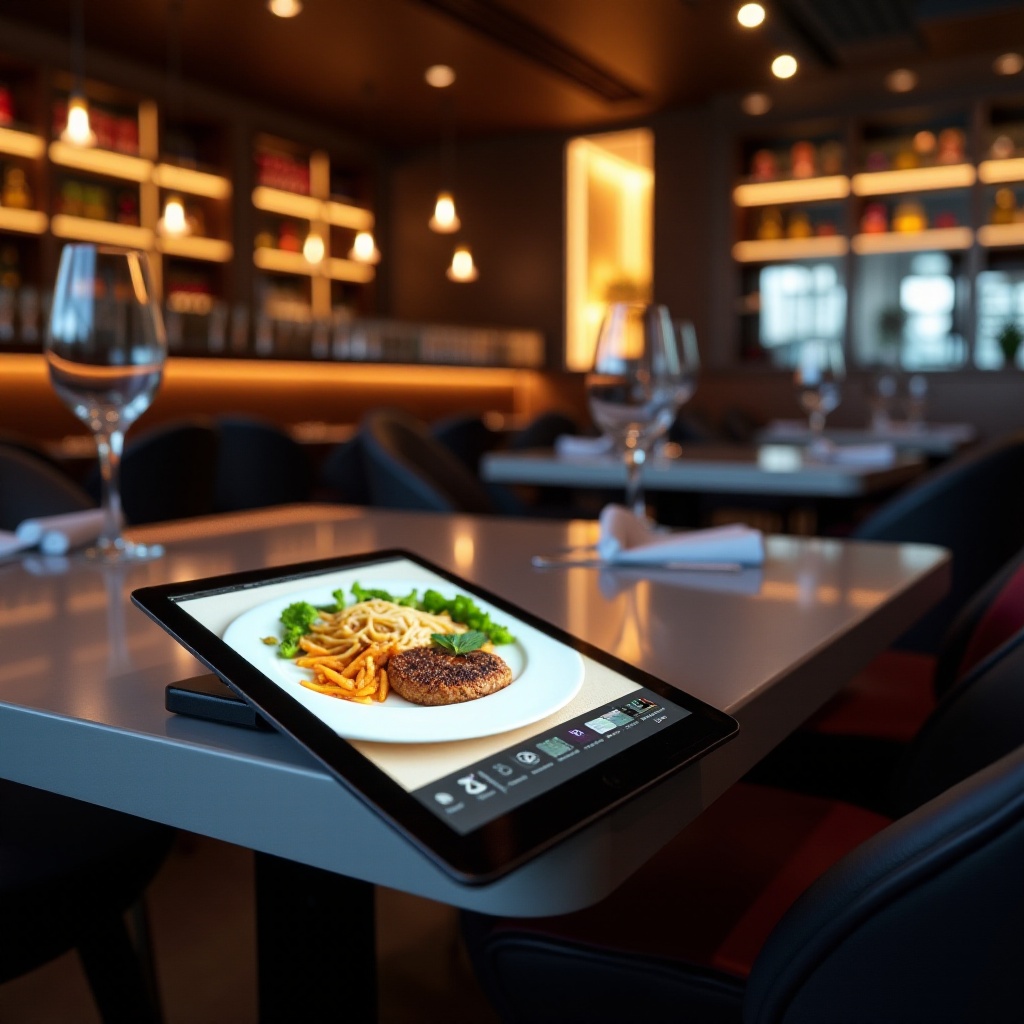Introduction
In a rapidly evolving digital age, businesses are leveraging technology to streamline operations and enhance customer experiences. One such innovative tool in this digital transformation is menu tablets. By 2024, these devices are set to become even more integral to the dining experience. This blog delves into what menu tablets are, their benefits, how to implement them effectively, real-life success stories, and future trends that can optimize your business.

Understanding Menu Tablets
Menu tablets are digital devices that restaurants, cafes, and other foodservice establishments use to display menus, take orders, and process payments. Featuring interactive screens and user-friendly interfaces, these tablets allow customers to browse the menu, customize their orders, and call for service without needing a server.
Unlike traditional paper menus, menu tablets can be updated in real-time to reflect changes in offerings, pricing, and specials. This feature eliminates the need for reprinting costs, allowing businesses to adapt swiftly to market and supply changes.
By incorporating high-quality images, detailed descriptions, and dietary information, these tablets provide a comprehensive dining experience that traditional menus cannot match. They also reduce ordering errors, enhance operational efficiency, and offer opportunities for upselling through smart recommendations and special promotions.
Benefits of Using Menu Tablets
Implementing menu tablets can bring various benefits to your business:
-
Efficiency and Accuracy: Streamline the order-taking process by allowing customers to input their orders directly. This minimizes the risk of human error and ensures accurate order handling.
-
Enhanced Customer Experience: With interactive and intuitive interfaces, customers find it easier to explore menu options. The inclusion of images and detailed descriptions aids decision-making.
-
Operational Flexibility: Make instant updates to the menu without additional printing costs. Seasonal items, price adjustments, and sold-out dishes can be swiftly reflected.
-
Increased Sales: Smart recommendations and upselling options presented by menu tablets can encourage customers to try new items or add extras to their orders.
-
Data Collection and Analysis: Menu tablets can collect valuable data on customer preferences and order patterns. This data helps businesses tailor their offerings and marketing strategies to better meet customer demands.
-
Eco-Friendly Option: Reduce paper waste by moving away from printed menus. This aligns with environmentally conscious business practices and appeals to eco-minded customers.
These advantages make menu tablets a practical investment for any modern food service establishment.
Key Takeaways for Implementing Menu Tablets
When considering integrating menu tablets, take these key points into account:
-
Assess Your Needs: Determine the specific functionalities required for your operation. Consider factors like the size of your establishment, menu complexity, and customer base.
-
Choose the Right Hardware and Software: Opt for durable, high-quality tablets designed for commercial use. The software should be easy to navigate and integrate with existing POS systems.
-
Train Your Staff: Ensure that your staff are well-trained in using the new system. This includes troubleshooting minor issues, guiding customers, and managing back-end updates.
-
Engage Your Customers: Introduce the tablets to your customers and educate them on their benefits. Highlight features like detailed food information, customizable orders, and interactive elements.
-
Monitor and Optimize: Continuously monitor how the tablets are being used and gather customer feedback. Use this information to optimize the system and ensure it meets both operational needs and customer expectations.
Proper planning and execution are crucial to achieving the full benefits of menu tablets.

Case Studies of Successful Integration
Several businesses have successfully implemented menu tablets, reaping significant benefits:
-
XYZ Fine Dining: This high-end restaurant based in New York incorporated menu tablets to provide detailed wine pairings and chef recommendations. This led to a 20% increase in their average check size and a noticeable improvement in customer satisfaction.
-
ABC Cafe: Located in San Francisco, ABC Cafe utilized menu tablets to manage their fast-casual dining environment. The tablets helped reduce wait times during lunch rushes and significantly cut down on staff errors, resulting in smoother operations and happier customers.
-
Global Chain Restaurant: Deploying menu tablets in several locations, this global chain noted a 15% boost in upselling due to the tablets’ smart recommendation features. Additionally, their ability to quickly update menus to reflect regional tastes contributed to better localization of their offerings.
These case studies highlight the versatility and profitability of integrating menu tablets into various dining formats.
Future Trends in Menu Tablets
As technology evolves, so will menu tablets. Here are some trends on the horizon:
-
AI Integration: Artificial intelligence will play a significant role in predictive analytics, helping to provide personalized menu suggestions based on past customer choices and preferences.
-
Augmented Reality (AR): AR can offer immersive dining experiences, allowing customers to visualize dishes and ingredients in 3D before ordering.
-
Voice Recognition: Voice-activated menu tablets could further streamline the ordering process, offering a hands-free user experience that caters to all customers, including those with disabilities.
-
Advanced Data Security: Ensuring robust encryption and secure transactions will be paramount as digital and cashless payments become more prevalent.
Embracing these emerging technologies will further enhance customer experience and operational efficiency.

Conclusion
Implementing menu tablets is a strategic move for modern foodservice businesses aiming to enhance efficiency, elevate customer experience, and drive sales. By understanding their benefits, implementing them thoughtfully, and keeping an eye on future trends, businesses can stay ahead in a competitive market. Real-life success stories serve as a testament to the tangible advantages these devices offer. Embrace the future of dining with menu tablets and watch your business flourish.
Frequently Asked Questions
What are the primary benefits of using menu tablets in businesses?
Menu tablets enhance order accuracy, improve customer experience, offer operational flexibility, boost sales through smart recommendations, facilitate data collection, and reduce paper waste.
How can I integrate menu tablets into my existing systems?
Choose compatible hardware and software, ensure thorough training for staff, educate customers on the new technology, and continuously monitor and optimize system performance based on feedback.
What should I consider when choosing a menu tablet for my business?
Factor in the specific needs of your operation, the quality and durability of the hardware, user-friendly software, compatibility with existing POS systems, and the level of customer support provided by the vendor.